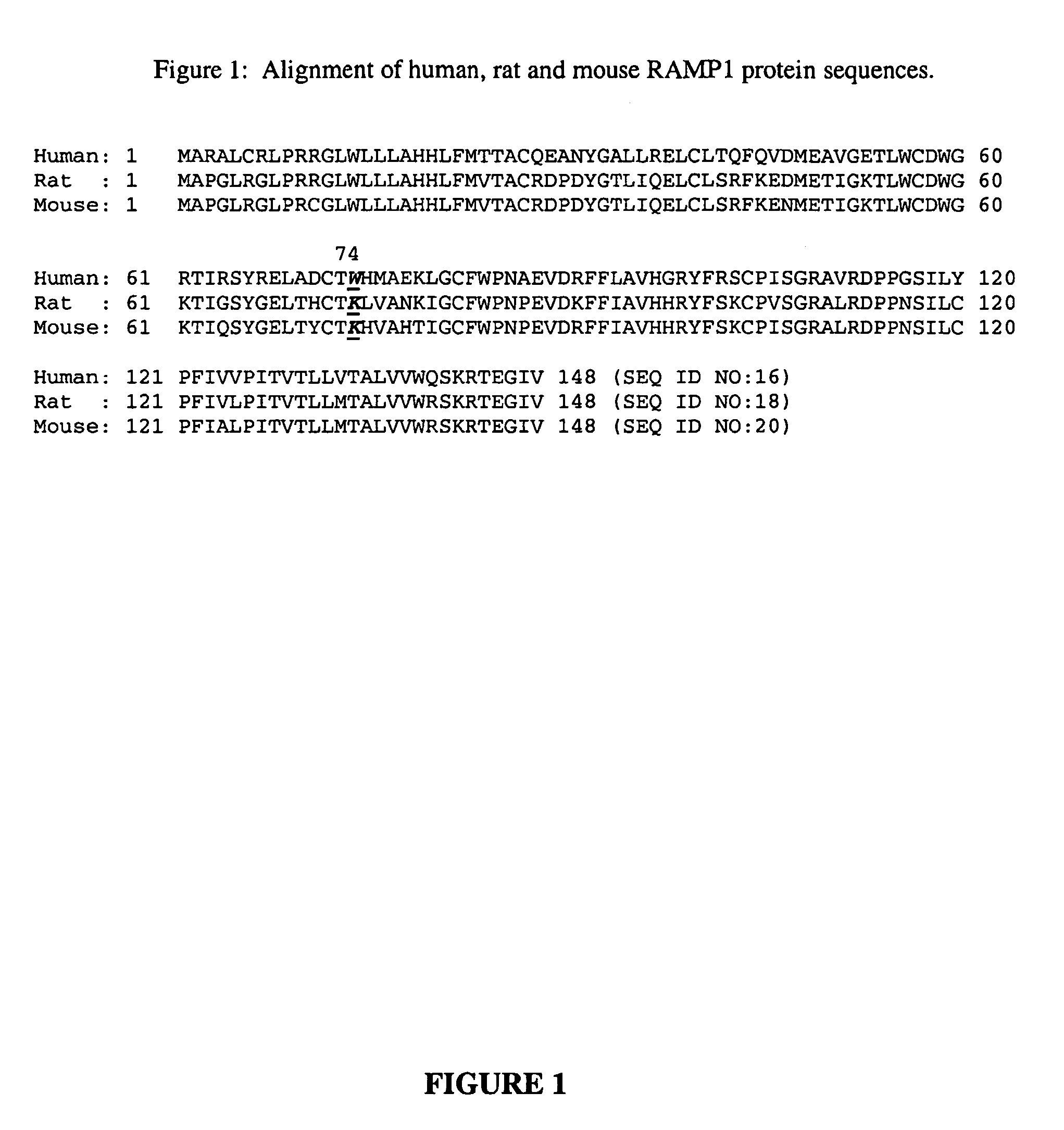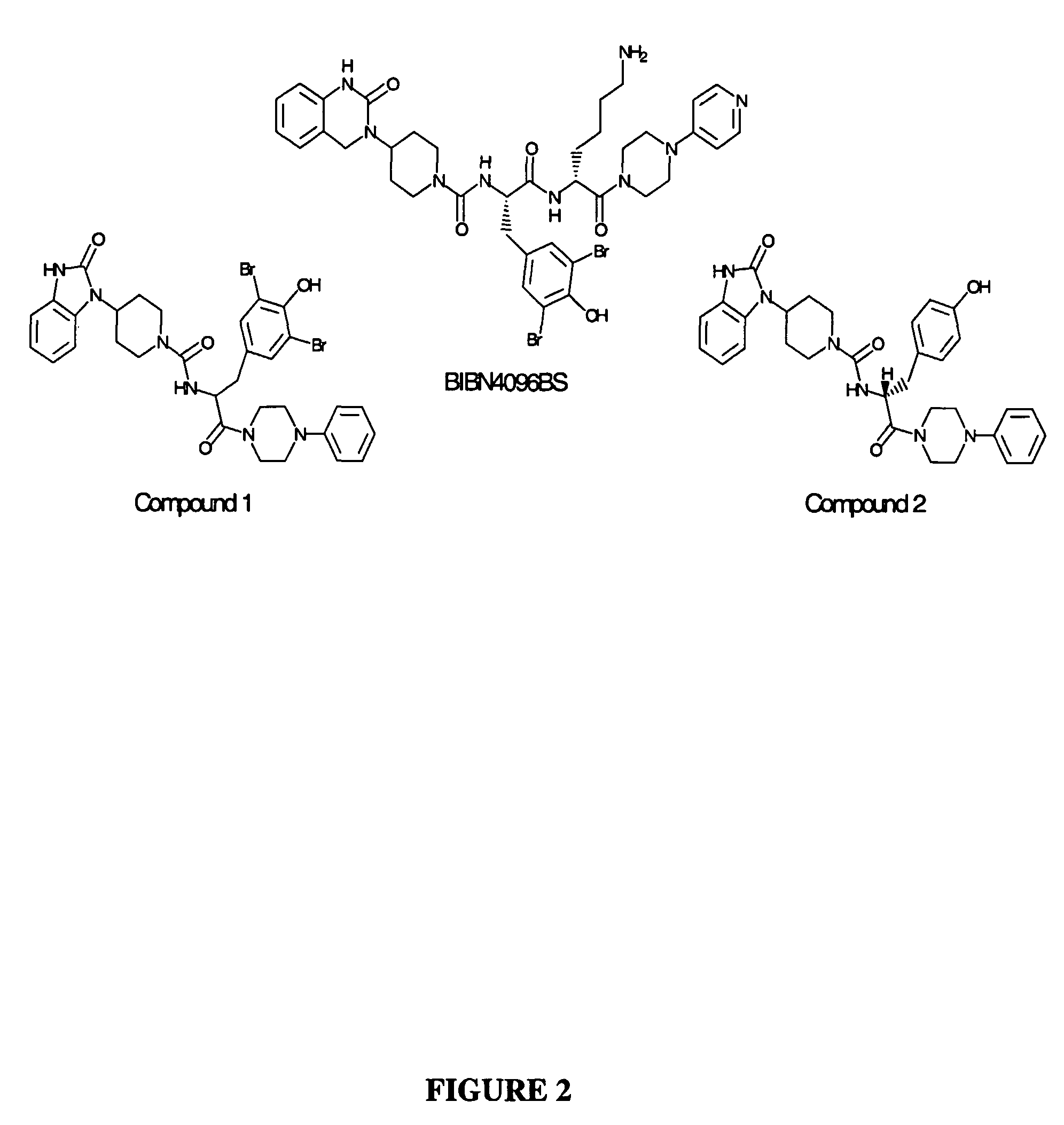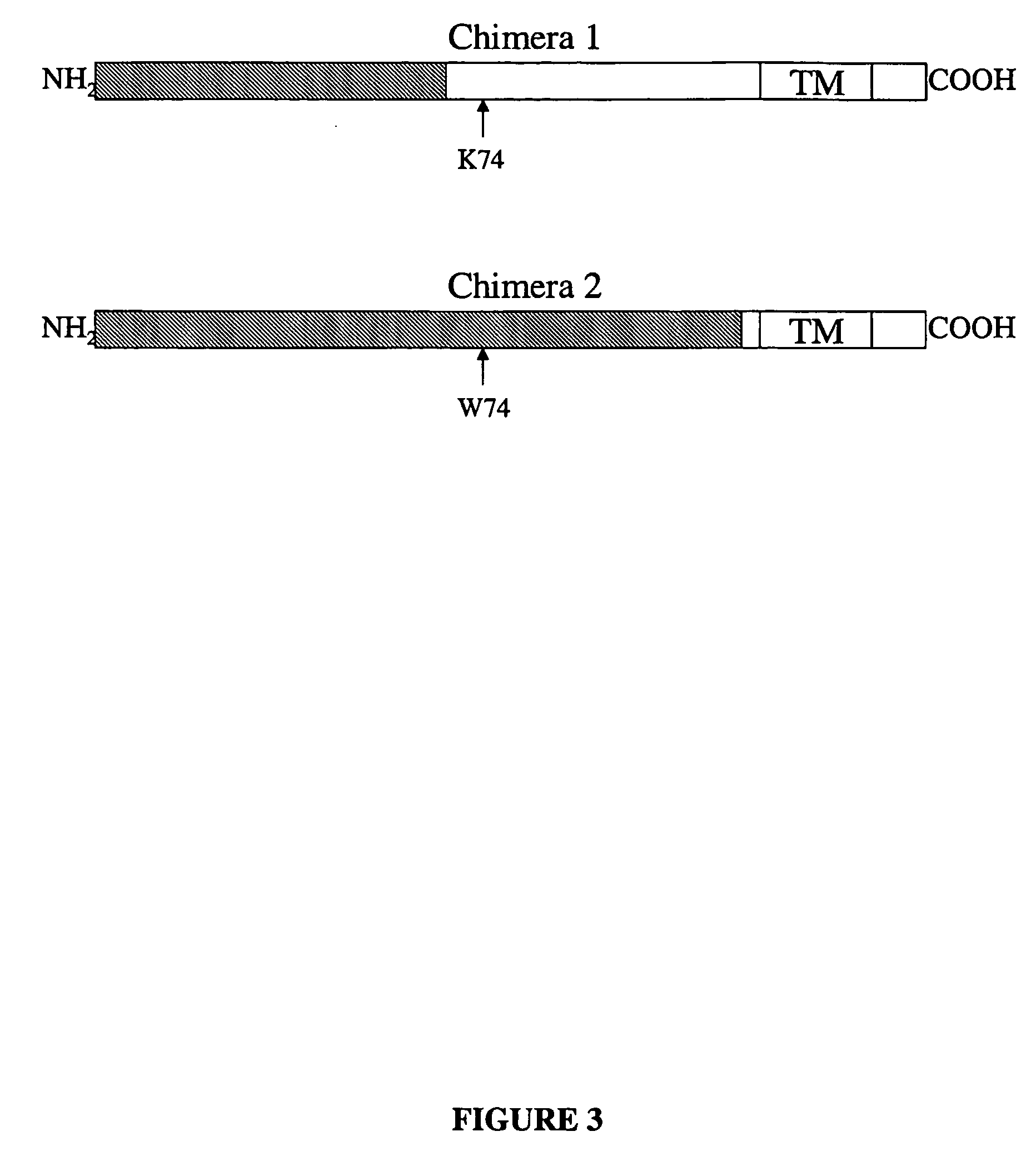Isolated DNA molecules encoding humanized calcitonin gene-related peptide receptor, related non-human transgenic animals and assay methods
a technology of humanized calcitonin and gene-related peptides, which is applied in the field of isolated dna molecules encoding humanized calcitonin gene-related peptide receptors, related non-human transgenic animals and assay methods, and can solve problems such as delayed migrainous headache in some patients
- Summary
- Abstract
- Description
- Claims
- Application Information
AI Technical Summary
Benefits of technology
Problems solved by technology
Method used
Image
Examples
example 1
Characterization of Various Mammalian and Humanized RAMP1 cDNAs
[0124]Marmoset and Cynomolgous RAMP1 cDNA Cloning—A partial marmoset RAMP1 cDNA and cynomolgous cDNA were isolated from frontal brain cDNA using the polymerase chain reaction (PCR). The PCR primers were based upon human RAMP1 (5′-CTGCCAGGAGGCTAACTACG-3′ [SEQ ID NO:25] and 5′-CACGATGAAGGGGTAGAGGA-3′ [SEQ ID NO:26]). Amplification reactions consisted of 40 cycles of 45 sec at 94° C., 45 sec at 58° C., and 1 min at 72° C. and were carried out according to the manufacturer's recommended protocol for PLATINUM Taq PCR DNA polymerase (Invitrogen). Multiple subclones were sequenced to rule out potential errors.
[0125]Expression Constructs, Chimeras, and Mutagenesis—Human and rat cDNAs for CRLR were subcloned as 5′NheI and 3′NotI fragments into pcDNA3.1 / Zeo(+) (Invitrogen). Human RAMP1 (hRAMP1) was provided in the expression vector pcDNA3.1(+) (Invitrogen). Rat RAMP1 (rRAMP1) cloning was as disclosed in Oliver et al., 2001, Eur. J...
example 2
[0140]A mouse cDNA for CRLR was isolated from mouse brain cDNA using the polymerase chain reaction (PCR). PCR primers (5′-TAGCTAGCGCCACCATGGATAAAAAGCATATAC [SEQ ID NO:29] and 5′-CGGGATCCTGGCTATCCAATCTTTTGGC-3′ [SEQ ID NO:30]) were based upon Genbank accession number AF209905. Engineered 5′NheI and 3′BamHI sites were utilized for subcloning into the expression vector pcDNA3.1 / Hygro(−) (Invitrogen). A mouse cDNA for RAMP1 was isolated from mouse brain cDNA utilizing PCR. PCR primers (5′-ATGCGGCCGCGTGGGGCTCTGCTTGCCATG-3′ [SEQ ID NO:31] and 5′-CGGGATCCCTCATCACCTGGGATACCTAC-3′ [SEQ ID NO:32]) were based upon the published mouse RAMP1 sequence (Knut, et al., 2000, Mol. Cell. Endocrinol. 162: 35–43). Engineered 5′NotI and 3′BamHI sites were utilized for subcloning into the expression vector pcDNA3.1 / Hygro(−) (Invitrogen). Mouse RAMP1 site-directed mutagenesis was performed by the same method employed in EXAMPLE 1. The mouse RAMP1 expression vector construct was used as template utilizing t...
PUM
| Property | Measurement | Unit |
|---|---|---|
| humidity | aaaaa | aaaaa |
| humidity | aaaaa | aaaaa |
| volume | aaaaa | aaaaa |
Abstract
Description
Claims
Application Information
 Login to View More
Login to View More - R&D
- Intellectual Property
- Life Sciences
- Materials
- Tech Scout
- Unparalleled Data Quality
- Higher Quality Content
- 60% Fewer Hallucinations
Browse by: Latest US Patents, China's latest patents, Technical Efficacy Thesaurus, Application Domain, Technology Topic, Popular Technical Reports.
© 2025 PatSnap. All rights reserved.Legal|Privacy policy|Modern Slavery Act Transparency Statement|Sitemap|About US| Contact US: help@patsnap.com



